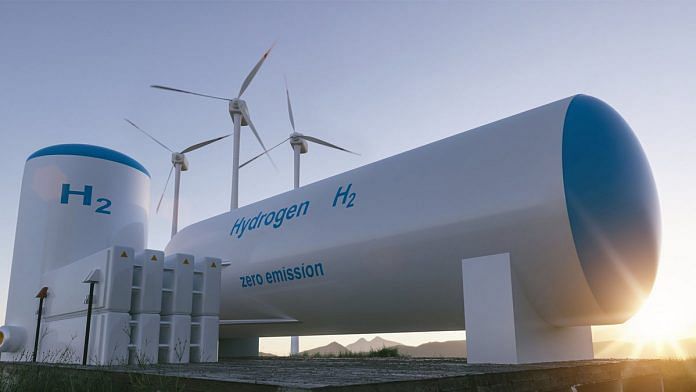New Delhi: During his Independence Day speech Sunday, Prime Minister Narendra Modi announced a National Hydrogen Mission and said India will become the world’s largest exporter of green hydrogen in the years to come.
“As we celebrate 75 years of Independence, we have to ensure India becomes self-reliant in energy production,” PM Modi said.
The announcement marks another step in India’s transition from fossil fuels like petroleum to renewable energy sources. As part of the 2015 Paris Agreement, India has pledged to generate 40 per cent of its power through renewable energy — an aim it seeks to fulfil by 2030.
Furthermore, the green hydrogen announcement is also expected to wean India off importing energy. According to an article in Livemint, India currently imports 85 per cent of its oil and 53 per cent of gas demand.
ThePrint looks at green hydrogen, how it is made and how it will help India become more sustainable in terms of energy.
Also read: Why hydrogen is, and likely to always be, the future of energy
Green, blue and brown hydrogen
Hydrogen is a colourless, odourless gas abundant in the Earth’s atmosphere and is utilised for industrial uses such as petroleum refining, aerospace applications and manufacturing of chemicals, steel, and ammonia fertilisers.
For industrial processes, hydrogen is extracted primarily through two methods, the gasification of coal or through a process called steam methane reformation (SMR).
In SME, methane from natural gas, when heated with steam, produces carbon monoxide and hydrogen that can be used as fuel.
However, these methods aren’t carbon-friendly, which means they cause vast emissions of greenhouse gasses like carbon dioxide. The hydrogen produced from these methods is called ‘brown’ hydrogen.
Another form of hydrogen, known as ‘blue hydrogen’ is also extracted similarly through SMR but is more carbon-friendly because it captures the carbon dioxide released and stores it, as opposed to emitting it into the atmosphere.
Green hydrogen, meanwhile, proposes to extract hydrogen without releasing any emissions at all.
The primary method of production is through electrolysis, a process that uses electricity to separate water into oxygen and hydrogen. If the source of electricity is renewable, the hydrogen production can also be considered renewable.
Also read: ‘Hydrogen economy’ can help build radical tech that combats greenhouse gases
Green Hydrogen infrastructure in India
India’s interest in producing hydrogen was cemented in the 2021-22 Union Budget, when the National Hydrogen Mission was first announced.
In April this year, Dharmendra Pradhan, then petroleum and natural gas minister, had said that the country was focusing on producing blue and green hydrogen along with blended hydrogen in Compressed Natural Gas (CNG) for various purposes, including transport.
“Through technological advancements, we are blending hydrogen with compressed natural gas for use as transportation fuel as well as an industrial input to refineries. 50 buses in Delhi are plying on blended hydrogen in Compressed Natural Gas on a pilot basis. We plan to scale it up in the coming months across the major cities of India,” he said at a roundtable on ‘Hydrogen Economy’ in New Delhi.
The push to switch to green hydrogen has been building momentum ever since.
Earlier this year, the Indian Oil Corporation Limited announced it would set up the country’s first green hydrogen plant. Reliance Energy followed, saying it would invest Rs 600 billion in building factories to produce green hydrogen among other carbon friendly technologies.
According to an article in Reuters, a draft policy with the government “wants green hydrogen to account for 10% of the overall hydrogen needs of refiners from 2023/24, rising to 25% in five years”.
(Edited by Rachel John)
Also read: Why Mukesh Ambani’s gigafactory for hydrogen could be a game-changer



